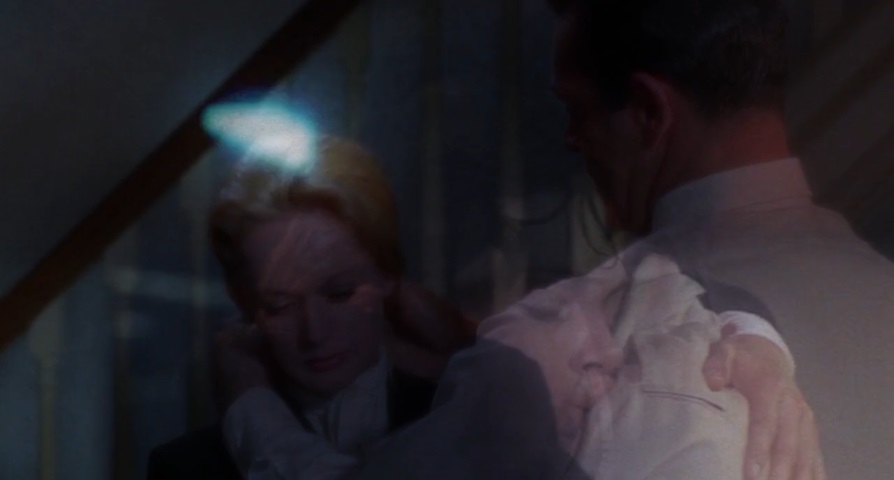SUGGESTED THAT THE BOY MIGHT "LOOK RIGHT DOWN THE BARREL OF THE LENS WHENEVER HE IS TALKING TO THE GHOST"

Yesterday, Variety's Todd Gilchrist posted an article with the headline, "Stir of Echoes at 25: Kevin Bacon, David Koepp Discuss the Influence of Brian De Palma and Steven Spielberg, and the Shadow of The Sixth Sense" - here's an excerpt:
How did you decide on the visual language of the supernatural?Koepp: I like the idea of an unsettling movie. And when you make them, it’s all about how well can you create an atmosphere. The more real it seems, the more unsettling it’s going to feel. The idea of having the kid start the movie talking to the presence was in the script. Brian De Palma, who I was working with a lot then, read the script and one of his first ideas was, “Why doesn’t he look right down the barrel of the lens whenever he is talking to the ghost?” And I knew enough to hear a good idea and take it when I was handed it. And then the rest was a collaboration between the production designer and the director of photography Fred Murphy. We just tried to really get everything very, very specific and accurate.
Were there other inspirations or influences from folks that you had worked with, be it De Palma or Steven Spielberg? I guess every filmmaker to some extent steals from Spielberg.
Koepp: They’re not that hard to spot. “Close Encounters,” obviously there’s a great deal in common — there’s something wrong with dad. He’s obsessed. He’s wrecking the house. There was a moment in “Poltergeist” where when the weird things first started happening in the house, Craig T. Nelson comes home and there’s JoBeth Williams on the floor with the kid and the football helmet and lets the kid slide across the floor and she whoops and jumps up and down. It’s fun at first, and I think it’s very true to human nature. If something extraordinary happens, it’s fascinating and exciting, you can’t leave that out just to have the spooks and scares and jumpstarts. So Spielberg, obviously not so much for visuals or shots, but for thematic things like extraordinary things happening to normal, regular people. And there’s some of “The Shining” in that.
As a writer of many stories full of fantastical ideas, what’s your barometer for storytelling where you give a character a choice that may not be the most believable choice, but you know that it serves a story?
Koepp: It goes back to Hitchcock’s thing — in every thriller, and ghost stories are thrillers of a different type — where you must answer the fundamental question, why don’t they call the police? And sometimes the answer is they do, and the police don’t do anything, or they do and that makes it worse. Before my first movie, as long as you’re encouraging me to name-drop, Bob Zemeckis had said, “You’ve got to read ‘Hitchcock/Truffaut’ twice before you do anything.” His other advice was, “Go stand in an airport for 12 hours. That’ll train you to be a director.” I didn’t do the airport one, but I read “Hitchcock/Truffaut” a few times and I picked that up from there. And in “Stir of Echoes,” I have [Tom’s wife Maggie] say, “We’re calling the police.” And he says, “And tell them what? Run it by me. I want to hear how it sounds,” which I thought adequately addressed that. But I also think the answer for Kevin’s character was because he’s compelled and he has to know.
This film comes after you’d worked on “Jurassic Park” and “The Lost World,” which used computer-generated effects in such an inventive and groundbreaking way. What was your experience like with CGI on this film?
Koepp: The CGI stuff we did was less fun, certainly, and less effective than practical solutions that we found. The thing where he pulls his tooth out was very old-fashioned kind of switcheroo makeup. And for the movements of the ghost, Fred and I watched this music video that we liked, and there was some very strange movement in it. So we shot at six frames a second whenever the ghost appeared, but we told the actress to move at quarter speed. So if she was walking across the room, it plays at apparently normal speed, but with a very bizarre shudder about her. Even when she’s just looking at him, there’s these tiny little movements in her face. And it was real, so that made it work better.













